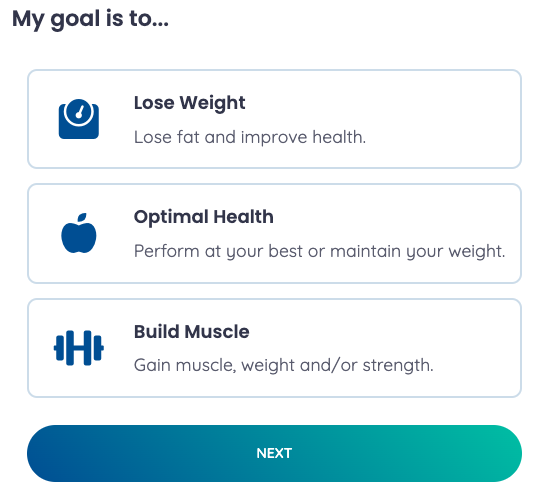When you are SMART, so are your goals!
When I hear the word “goals” my brain thinks, “go big or go home”. If it’s not some mammoth goal it’s not worth doing.
- It can’t be “Hey, it would be nice to do 5 unassisted pull-ups”… it has to be 100 of the crazy whole-body-swinging CrossFit ones.
- It can’t be “jog at a moderate speed”… it has to be a Usain-Bolt-worthy sprint.
- It can’t be “a 1 minute plank”… it has to be a 15-minute circuit of core-numbing acrobatics, that I watched an Instagram model doing with ease.

BIG goals get us fired up and excited. We can visualize ourselves doing the crazy pull ups, that sprint, those planks, and it seems so real we can basically check it off as “goal achieved”.
And then what happens? No plan, no preparation. We dive in! We learn very quickly we DO NOT have the stamina or core strength for that 15-minute ab-circuit – we are buckling after 20-seconds. Our body hurts physically and emotionally, we get overwhelmed, discouraged and then throw our hands up and quit altogether. We compare ourselves to the girl/guy we saw in the video and think “they made it look so effortless, it can’t be that hard, I must be a failure”, and instead of feeling empowered and motivated, we feel disappointed because we couldn’t replicate similar results.
With goals we tend to see the start and the finish, and neglect everything in between. We neglect the milestones and check-points along the way that are necessary to accomplish our goals!
So, how do we set up a goal properly to increase our chances of success?
Two things:
- Ask yourself WHY you want to accomplish this goal. The answer bringing you back to something you value, like strengthening your back to live with less pain, for example. Knowing what drives your goals will keep you focused and moving forward during the times the plan is falling apart, or after you accomplish your goal and wonder what is next.
- Once you figure out WHY, the next step is HOW. How will I achieve this? The answer is SMART!
SMART is an acronym and stands for Specific, Measurable, Attainable, Realistic and Timely.

SPECIFIC – This is the details on what it is exactly you want to achieve. The more specific the better. Saying you want “a strong core” isn’t very specific, what does “a strong core” mean to you? Is it a particular look, or performance level for your body? Would you like to strengthen your core to hold a 1-minute plank or perform olympic gymnastics? All requiring a different level of core strength. Saying “I want to be able to complete a 10-minute ab circuit without stopping” is more specific.
MEASURABLE – How will you measure this goal? For the ab circuit, you can use time as your measure. Break down the circuit into smaller 1-minute intervals, and as you get stronger keep adding a minute on until you reach the full 10-minutes.
ATTAINABLE – Is it possible to attain this goal? What are my barriers? Do I have the time to fit 10-minutes circuit into my day? Can I schedule it in? Does something else need to be neglected in order for me to prioritize this? A goal that is too difficult to achieve could lead to failure. Failure can affect your mental health. Leading you to beat yourself up, and beat down your self-worth and self-esteem. Instead of feeling empowered you will feel inadequate. Definitely not something I would want to sign up for.
REALISTIC – What is your starting point and is this goal within a reasonable reach for you at this stage? Is a 10-minute ab circuit attainable? Absolutely! However, if you can barely hold a plank for 30 seconds, 10 minutes will be too much to start. Maybe working on just holding a plank for a minute is a better starting point. Then increasing to 2 minutes and so on until you reach 10 minutes. Then set a new goal of starting the circuit. Breaking the goal down into smaller achievable ones will provide the success needed to encourage one to keep reaching higher.
TIMELY – How much time do you need to achieve your goal? Giving yourself too much time will leave you unmotivated, but setting too tight of a deadline will be sure to overwhelm and lead to disappointment. A deadline will also keep you on track and create some urgency. Giving yourself 1-month to move from a 1-minute plank to two minutes may be too relaxed of a timeline, but moving up by 1-minute every 7 days could be urgent enough to help you push yourself, but not too urgent that you won’t be ready to move to the next round.
Now that we have considered all aspects of SMART, we can formulate our goal and THE PLAN.
“I intend to hold a 10-minute plank without stopping. I will achieve this by starting with a 1-minute plank and increasing the time by 1-minute every 7 days for a total of 10 weeks. This goal will get me closer to the larger goal of doing a 10-minute ab circuit without stopping, and will help me to strengthen my back!”
Once the goal has been designed you can’t just set it and forget it. The plan needs to be revisited at appropriate intervals, and adjusted. Some aspect of SMART needs to be tweaked in order to stay on track, as with most plans they don’t work out exactly as we had hoped.
Revisiting the plan also lets you see how far you have come and celebrate the little milestones as you reach them. Because where would be the fun in all work and no play?






